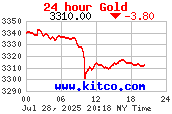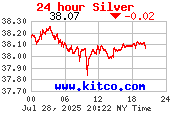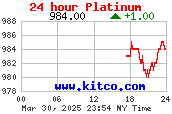Nouriel Roubini
最近我先後兩次踏足中國,恰逢政府啟動十二五計畫,以重新調整其長期增長模式。而這兩次訪問,使我更加深信,中國的短期和中期經濟狀況之間,存在著可能影響穩定的潛在衝突性因素。
中國經濟目前已經過熱,但再過一段時間,當前的過度投資,將引發其國內乃至全球的通貨緊縮;一旦不斷增加的固定資產投資無以為繼─這很可能在2013 年發生─中國經濟的發展就可能嚴重放緩。
可見中國的政策制定者,應當關注的不是如何確保在當前實現軟著陸,而是經濟發展可能在五年計劃後半段,出現嚴重受阻的問題。
雖然新計畫也像上一個五年計劃那樣,宣稱要增大消費佔GDP 的比例。但對政府來說,政治阻力最小的做法依然是維持現狀。公開發布的新計畫細節也顯示:經濟的增長依然要仰仗投資(包括興建公共住房)來支撐,而不是以實施更迅速的貨幣升值,面向家庭的大規模財政轉移支付,稅收和/或國有企業的私有化,解除戶口制度限制以及放寬財政管制的方式來實現。
過去幾十年以來,中國都是靠以出口為導向的工業化和弱勢貨幣來實現增長,並因此催生了極高的企業和家庭儲蓄率,以及對淨進口和固定資產投資(基礎設施,房地產以及來料加工和出口部門的生產能力)的依賴。
當淨出口金額從2008 至2009 年度的佔GDP11%,下降到5%的時候,中國領導人的應對措施,就是將固定資產投資占GDP 的比例從42%拉高到47%。
憑藉著爆發性的固定資產投資,中國得以擺脫了2009 年日本,德國和亞洲新興國家所遭遇的嚴重經濟衰退。但固定資產投資佔國內GDP 的比例,也因此進一步上升到2010 至2010 年度的近50%。
這就暴露出一個問題:任何國家都不可能擁有足夠的發展速度,足以在將50% 的GDP 重新投資的情況下,最終避免遭遇巨大的產能過剩,和令人憂心的不良貸款問題。中國內部到處充斥著在實物資本,基礎設施和不動產方面的過量投資。在一個訪問者眼中,證據就是那些光鮮靚麗卻旅客寥寥的機場和高速列車,通往偏僻之地的高速公路,數千座高大的中心城鎮和地方政府建築,空無一人的新城區,以及被迫關閉以避免引發全球價格下跌的嶄新鋁冶煉廠。
商業和高級住宅方面的投資早已過剩,汽車的產能即便在最近的銷售熱潮中也已經過量了,鋼鐵,水泥和其他製造部門的產能過剩問題也在不斷惡化。在短期內,這場投資繁榮將刺激通貨膨脹,這是源自于其高度資源密集型的增長特點。但過剩的產能將無法避免地帶來嚴重的通貨緊縮壓力,而製造業和房地產部門則首當其衝。
中國大概會在2013 年後遭遇一場硬著陸。事實上所有與過度投資有關的歷史場景─包括在1990 年代的東亞地區所發生的一切─都會以一場金融危機和或長期的低增長來謝幕。如果要避免這一命運的話,中國需要降低儲蓄率,減少固定資產投資,削減淨出口佔GDP 的比例,並刺激消費所佔的比重。
但問題是中國人之所以樂於儲蓄而不願消費,是有其結構性原因的。而要扭轉這一過度投資的誘因,可能需要整整20 年的改革。
對於高儲蓄率的傳統解釋(缺乏社會安全網,有限的公共服務,人口老化,消費信貸的不發達),只是這一迷局的其中一部分。中國大陸地區的消費者並不比香港,新加坡和臺灣等地的同胞更傾向于儲蓄─他們都同樣會將大概30%的可支配收入存起來。但最大的區別在於家庭部門佔中國GDP 的比例小於50%,因此也只給消費留下了一個很小的空間。
人民幣弱勢保護出口
中國實施的一系列政策,都是將大量收入從政治上處於弱勢的家庭轉移到了強勢的大企業手裏;弱勢的人民幣使進口商品變得昂貴,降低了家庭購買力,卻保護了那些出口型國企並增加了出口商的利潤。
面向家庭的低存款利率和面向企業和開發商的低貸款利率,意味着千家萬戶的巨額儲蓄實際上的是在賠錢,而國企的貸款成本卻是負數。這就產生了一個強大的過度投資誘因並意味著從家庭向國企的大規模轉移支付─倘若這些企業以市場利率貸款的話,肯定是要虧損的。
此外,對工人的壓榨,也導致工資上升的幅度,遠遠低於生產力的增長速度。
如果要放寬對家庭收入的限制的話,中國必須讓人民幣更快地升值,放開利率管制,並大幅增加工資。更重要的是,中國要麼必須將其國企私有化,讓這些企業的利潤能轉化為家庭收入,要麼像這些企業徵收更高的稅收並將這些財政收入轉移給家庭。事實上,除家庭儲蓄之外,企業部門(大部分為國企)的儲蓄─或者說保留利潤─已經佔到了GDP 的25%。
但增加家庭佔總收入比例的舉措,將產生極大的破壞效應,因為這會導致一大批國企,出口企業和地方政府破產,而這些又是在政治上很有權勢的部門。最終導致的結果,就是中國只能在這個五年計劃中,繼續增加投資。
繼續沿著這條投資導向的道路走下去,將使已經暴露出來的製造業,房地產和基礎設施產能飽和現象進一步惡化,並將在固定資產投資增長無法繼續擴大的情況下,加劇未來的經濟放緩。但直到領導層在2012 至2013 年換屆之前,中國的政策制定者們,都將繼續在罔顧巨額未來成本的情況下維持一個高增長率。
作者為魯賓尼全球經濟研究院(www.roubini.com)主席, 同時也是紐約大學斯特恩商學院教授以及CnisisEconomics 一書的合著者。
Is China becoming Japan in the 1980s?
Let's talk about a boring topic today – China's inflation.
Even if you have only paid scant attention to economic news, you have probably noticed that the topic of rising prices in China has come up again and again in the media. Indeed, for the past year, it has been a grave concern for Beijing to tame inflation in the country .
The latest economic data released last week didn’t ease the concern. The consumer price index (CPI) surged 5.4 percent in March from a year ago – higher than the 4.9 percent in February and market consensus of 5.2 percent – indicating a worsening trend.
So it comes as a remarkably contrarian voice when somebody suggests that China could be heading toward deflation, instead of inflation. Especially if it comes from the prescient Dr Nouriel Roubini, you'd better take heed.
In his usual alarmist manner, Dr Roubini, nicknamed Dr Doom, said in his article “China’s Bad Growth Bet” that China’s “current overinvestment will prove deflationary both domestically and globally” over time. He is predicting this will happen most likely after 2013 and China is “poised for a sharp slowdown”.
His rationale is simple – the level of investment in China is unsustainable and will backfire eventually. China always has a high level of investment but it got even higher after the financial crisis. As China struggled to maintain its near double-digit GDP growth rate after the crisis, it boosted its fixed asset investment to fill the void from collapsing trades. The share of fixed investment in GDP has risen to nearly 50 percent this year from just 42 percent before the crisis. As Roubini rightly pointed out, no country, even China, would be productive enough to reinvest half of its GDP without facing enormous overcapacity and non-performing loan problems. Such worry is not groundless. In fact, we can find striking similarities between China now and Japan in the 1980s.
As a result of heavy lending and inflated asset prices, investment accounted for a large share of GDP in Japan during the 1980s. The figure was 31 percent in 1988-1990, already a pretty high figure, but China’s figure is still much higher.
Both China and Japan have relied on export-led growth. With the strong surplus in the external accounts, their currencies should normally appreciate. But for whatever reason, both governments have tried to hold down their currencies by explicit or implicit interventions. The result is massive foreign currency reserves and asset bubbles due to the liquidity injected into the system through currency interventions.
Bank loans were also pivotal in driving investment booms in both countries. Bank lending was growing faster than nominal GDP growth for both of them. What made things worse was that lending decisions were not based solely on commercial merits. In 1980s Japan, you had zaiteku, which means “raising profit by utilizing capital for securities investments, real estate and the like”. Intercompany loans between related companies allowed companies that otherwise would not have easy access to bank credit to borrow money cheaply. As real investment opportunities ran out, money flowed into real estate and other asset markets, fuelling bubbles.
A similar scenario is starting to surface in China.
Some would argue that China’s GDP is still growing strongly so we should not get caught up in the scaremongering tactics of those doomsayers. The strong growth of GDP, however, is precisely the reason why an eventual collapse seems inevitable. As investment now accounts for nearly half of China’s GDP, the repercussions could be huge when those investments turn sour. China’s obsession with GDP may prove fatal when people realize the money that has been spent during the boom years went into building bridges to nothingness or ghost towns in the middle of nowhere.
Perhaps what the Chinese government fears the most is not the country will turn into Japan in the 1980s but rather into itself in the 1980s. Driven by market-liberalizing policies, China enjoyed strong economic growth in that decade. But high inflation, like current one, plagued the whole country. Inflation spiked to nearly 20 percent in 1988 and 1989 before dramatically falling to 2.1 percent in 1990. Well, we all know what happened in 1989, don't we?
Jacky Wong is a Hong Kong-based analyst. He has worked at global investment banks and hedge funds in various roles including derivatives trading and equity research.





1 則留言:
Good articles!
發佈留言